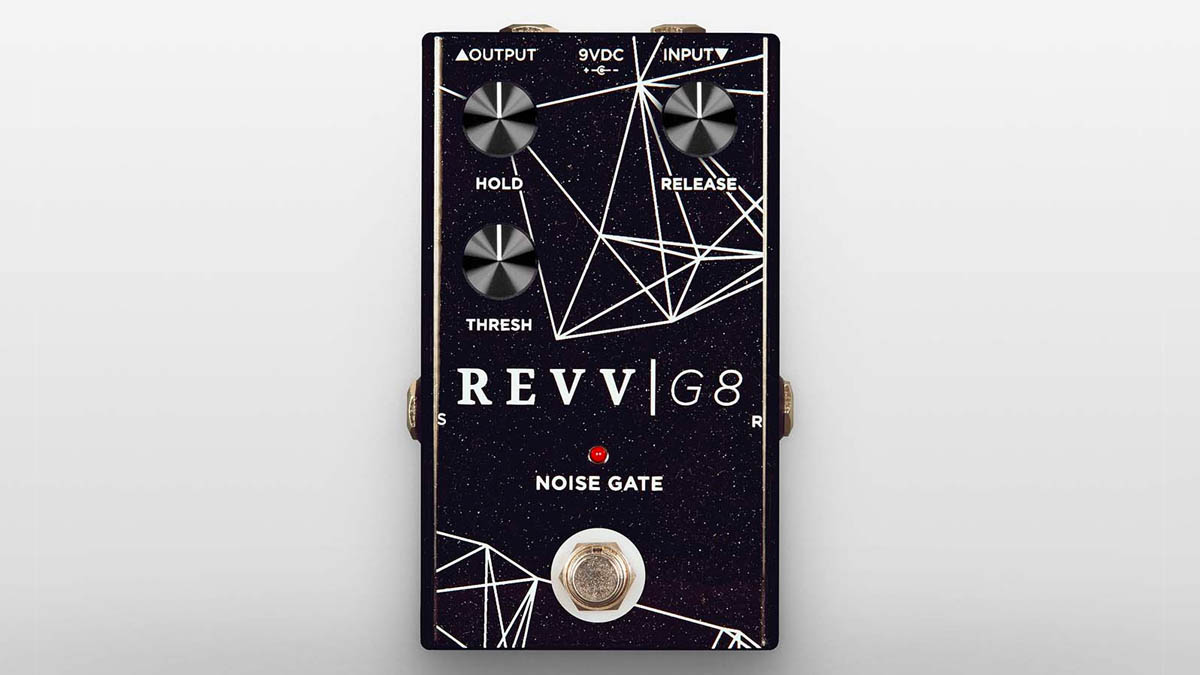Kill unwanted noise and dial in “sliced and diced metal rhythm tone” with Revv Amplification’s G8 Noise Gate
The G8 Noise Gate takes a no-holds-barred approach to noise control that's ideal for high-gain rock and metal, but transparent enough to be used by players of all styles
Revv Amplification has released a simple stompbox solution for guitar players whose enjoyment of high-gain, high-volume musical extremism has been curtailed by unwanted noise.
The G8 Noise Gate is a killer of hum, hiss and other undesirables, and it is designed to be both flexible and easy to use. A noise gate might not capture the imagination in the same as a distortion pedal might, but very often the latter requires the use of the former, particularly if you like to play staccato heavy metal rhythm guitar and want to preserve the silent/loud dynamic.
The G8 does that. Crucially, it does not step on your guitar tone while showing noise the door. Dan Trudeau, Revv Amplification’s president and head designer, says the G8 was inspired by the success of the Generator 120 MK3’s onboard noise gate.
“I knew we could design a killer rock & metal gate,” says Trudeau. “The real journey began once we decided it had to be so transparent we could convert guitarists who would normally never touch a gate.”

The G8 has three controls on a single-footswitch enclosure: Hold, Release and Thresh (threshold). Threshold controls the amount of noise reduction. Release allows you to adjust the gate’s response so you lose no sustain.
Hold, meanwhile, is about making subtle adjustments, making sure the gate closes when you want it to. After all, noise can come from the room, other electrical appliances, bandmate’s gear and so on, and idea is that after adjusting the pedal, the noise goes and your tone stays.
Revv promises that it’s so transparent, you won’t even know it’s standing between you and your guitar amp. While noise gates are an essential piece of kit for heavy metal and hard rock guitarists, Revv hopes that the G8’s transparent performance will see it on the pedalboards of blues, country and jazz players two.
Get the MusicRadar Newsletter
Want all the hottest music and gear news, reviews, deals, features and more, direct to your inbox? Sign up here.
It has four jacks, allowing for two-cable or four-cable connections, and is true bypass, with an LED for showing you when the noise gate is active or bypassed.
The G8 Noise Gate takes a 9V DC power supply, draws a minimum of 50mA, and is made in Canada. And if you’ve got £179 / $199 can buy one now. See Revv Amplification for more details.
Jonathan Horsley has been writing about guitars and guitar culture since 2005, playing them since 1990, and regularly contributes to MusicRadar, Total Guitar and Guitar World. He uses Jazz III nylon picks, 10s during the week, 9s at the weekend, and shamefully still struggles with rhythm figure one of Van Halen’s Panama.
“Built from the same sacred stash of NOS silicon transistors and germanium diodes, giving it the soul – and snarl – of the original”: An octave-fuzz cult classic returns as Jam Pedals resurrects the Octaurus
“For guitarists who crave an unrelenting, aggressive tone that stands out in any mix”: The Fortin Meshuggah head is the amp every metal player wants – now you can get its crushing tones in a pedal










